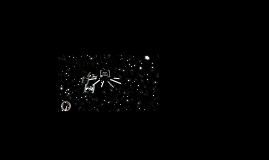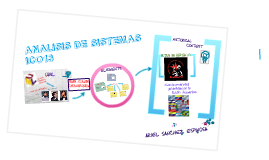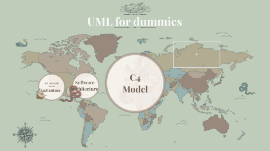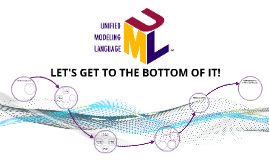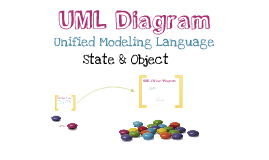UML
Transcript: UML USE CASE - UML HISTORICAL BACKGROUND Conclusion The unified Modelling Lenguaje (UML) is a lenguaje and notation system used to especify,construct,visualize and document models of software systems. UML is not a methodologhy(which considers the specific framework and conditions of an application domain the organizational environment and may other things. THE RESULTS WERE NOT ALWAYS AS GOOD AS EXPECTED - MANY SYSTEMS ENGINEERING COMPUTER AIDED SOFTWARE (CASE) WERE LITTLE MORE THAN REPORT GENERATORS THAT EXTRACTED DESIGNS AFTER THE IMPLEMENTATION WAS FINISHED, BUT GOOD IDEAS INCLUDED METHODS THAT WERE USED EFFICIENTLY IN SOME CASES IN BUILDING LARGE SYSTEMS. THE COMMERCIAL APPLICATIONS WERE MORE RELUCTANT TO ADOPT AA LARGE CASE SYSTEMS AND DEVELOPMENT METHODS. MOST SOFTWARE DEVELOPED ITS BUSINESS INTERNALLY AS NEEDED, WITHOUT THE ADVERSARIAL RELATIONSHIP BETWEEN CLIENT AND CONTRACTOR THAT CHARACTERIZED THE MAJOR GOVERNMENT PROJECTS. COMMERCIAL SYSTEMS WERE PERCEIVED AS SIMPLER, WHETHER THEY WERE TRUE OR NOT, AND THEREFORE HAD LESS NEED FOR A REVIEW BY AN EXTERNAL ORGANIZATION. The UML language began to take shape in October 1994, when Rumbaugh joined Rational company founded by Booch (two respected researchers in the area of software methodology). The goal of both was to unify two methods were developed: the Booch method and OMT (Object Modelling Tool). The first draft appeared in October 1995. At the same time another well-known researcher, Jacobson joined Rational and his ideas were included. These three are known as the "three friends". Furthermore, this language was open to collaboration with other companies to provide their ideas. These collaborations led to the definition of the first version of UML -A use case describes, from the point of view of the actors-a group of activities of a system that produces a concrete and tangible result. Use cases are descriptions of typical interactions between users of a system and the system itself. Represent the external interface of the system and performance requirements specify what must have this (remember, only what, not how). When working with use cases, it is important to remember some rules: Each use case is related to at least one actor Each use case is an initiator (ie an actor). UUML is not a programming language. The tools can Provide UML code generators for a variety of programming language, and build models for reverse engineering from Existing programs.The UML notation is derived from and unifies the three methods of analysis and extended designs.Grady Booch Methodology for Describing sets of objects and Their relationships.Technical modeling objectoriented James Rumbaugh (OMT: Object - Modelling Technique).Approximation of Ivar Jacobson (OOSE: Object-Oriented Software Engineering) by the method of use cases (use case). UML HISTORICAL CONTEX DEVELOPING METHODS FOR TRADITIONAL PROGRAMMING LANGUAGES SUCH AS COBOL AND FORTRAN, EMERGED IN THE 70'S AND BECAME WIDESPREAD IN THE 80. FOREMOST AMONG THEM WAS STRUCTURED ANALYSIS AND STRUCTURED DESIGN [YOURDON-79] AND ITS VARIANTS SUCH AS REAL-TIME STRUCTURED DESIGN [WARD-85] AND OTHERS. THESE METHODS ORIGINALLY DEVELOPED BY CONSTANTINE, DEMARCO, MELLOR, WARD, YOURDON, AND OTHERS, REACHED SOME INSIGHT INTO THE AREA OF LARGE SYSTEMS, ESPECIALLY FOR PROJECTS CONTRACTED BY THE GOVERNMENT IN THE FIELDS OF AEROSPACE AND DEFENSE, IN WHICH CONTRACTORS INSISTED ON A DEVELOPMENT PROCESS ORGANIZED AND COMPREHENSIVE DOCUMENTATION OF THE DESIGN AND IMPLEMENTATION OF THE SYSTEM. UML has been promoted and accepted as standard from the OMG, which is also the origin of CORBA, the industry leading standard for distributed object programming. In 1997 UML 1.1 was approved by the OMG becoming the de facto standard notation for analysis and object-oriented design. UML is the first method to publish a meta-model in its own notation, including notation for most of the information requirements analysis and design. It is therefore a meta-model self-referential (any language general-purpose modeling should be able to shape one's self). And one more thing... SYSTEMS ANALYSIS TEST DIAGRAM OF CASE The use case diagrams describe the relationships and dependencies among a group of use cases and actors involved in the process. Importantly, the use case diagrams are not intended to represent the design and can not describe the internals of a system. The use case diagrams are used to facilitate communication with the future users of the system, and the customer, and are especially useful in determining the characteristics necessary to be the system. In other words, use case diagrams describe what the system should do but not how.






